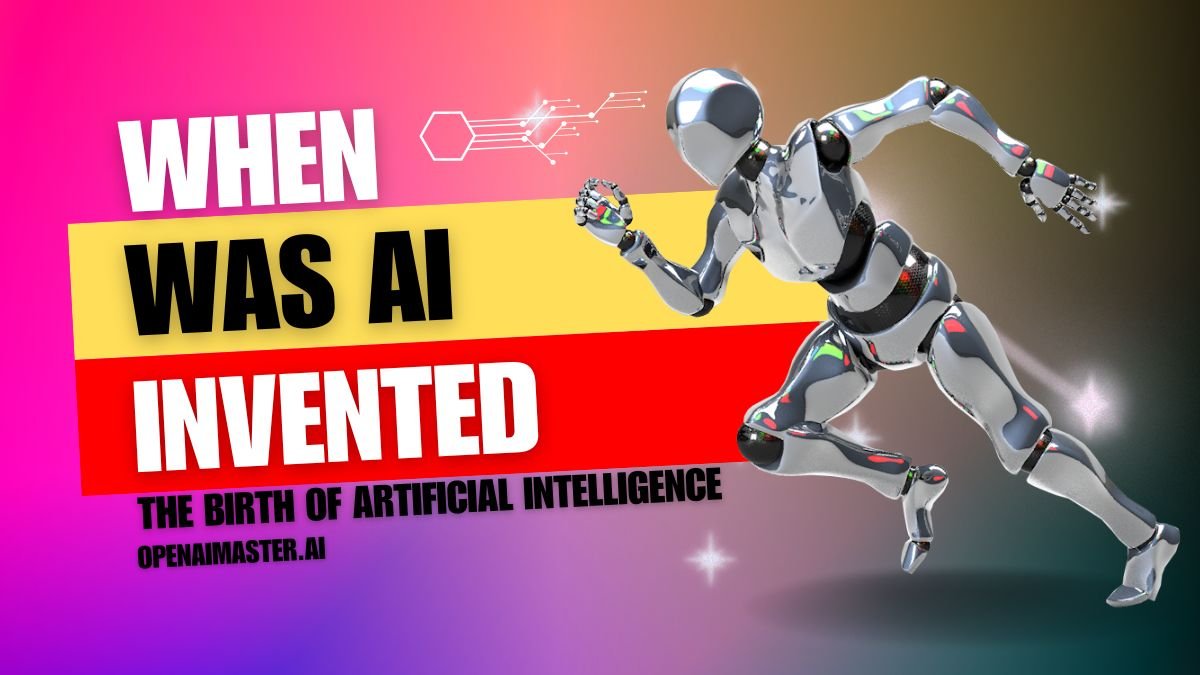Introduction
Artificial Intelligence (AI) has become a ubiquitous term in our modern world, permeating every aspect of our lives, from the way we communicate to the way we work and play. However, the origins of this revolutionary technology can be traced back decades, to a time when the idea of machines exhibiting human-like intelligence was nothing more than a mere concept, a dream shared by a small group of visionary researchers and scientists.
In this article, we will delve into the fascinating history of AI, exploring its inception and the groundbreaking applications that paved the way for the remarkable advancements we witness today. From the earliest game-playing programs to the foundations of neural networks and natural language processing, we will uncover the pioneering efforts that laid the foundation for the AI revolution.
When was AI Invented?
The Dartmouth Workshop: The Birth of AI
The year was 1956, and a group of researchers and scientists gathered at Dartmouth College in Hanover, New Hampshire, for a summer workshop. Among them was John McCarthy, a brilliant mathematician and computer scientist who would go on to coin the term “artificial intelligence.” This pivotal event, now known as the Dartmouth Workshop, is widely regarded as the birth of AI as an academic discipline.
During the workshop, McCarthy and his colleagues proposed the ambitious goal of creating machines that could mimic human intelligence and reasoning capabilities. This idea, once considered science fiction, ignited a flurry of research and experimentation, as scientists from various fields collaborated to explore the possibilities of artificial intelligence.
The Earliest Applications of AI
While the Dartmouth Workshop served as the catalyst for AI research, the earliest applications of this emerging technology were already taking shape. From game-playing programs to problem-solving systems and theoretical demonstrations of intelligent behavior, these early efforts paved the way for the remarkable advancements we witness today.
Game Playing Programs
One of the earliest and most iconic applications of AI was in the realm of game playing. In 1951, Christopher Strachey developed a checkers-playing program, running on the Ferranti Mark 1 machine at the University of Manchester. This program was quickly followed by a chess-playing program written by Dietrich Prinz for the same machine.
However, it was Arthur Samuel’s checkers-playing program, developed in 1952, that truly captured the imagination of the scientific community. Samuel’s program was remarkable in its ability to learn from its experience, allowing it to improve its gameplay over time. This groundbreaking achievement laid the foundation for the development of machine learning algorithms, a critical component of modern AI systems.
Logic Theorist and Problem-Solving Systems
In 1955, Allen Newell, J.C. Shaw, and Herbert A. Simon developed the Logic Theorist, a program designed to mimic human problem-solving skills. This pioneering system was capable of proving mathematical theorems and demonstrated its prowess by proving 38 of the first 52 theorems in Russell and Whitehead’s Principia Mathematica, even finding more elegant proofs for some.
The Logic Theorist was a significant milestone in AI research, as it showcased the potential of machines to reason and solve complex problems, a capability previously thought to be exclusive to the human mind.
Neural Networks and Perceptrons
Another groundbreaking development in the early days of AI was the exploration of neural networks and perceptrons. In 1951, Marvin Minsky and Dean Edmonds built the first neural network machine, the SNARC, which used 3,000 vacuum tubes to simulate a network of neurons.
Seven years later, in 1958, Frank Rosenblatt developed the perceptron, an early artificial neural network that could learn from data. This seminal work laid the foundation for the modern neural networks that power many of today’s AI applications, including image and speech recognition, natural language processing, and decision-making systems.
Natural Language Processing (NLP)
One of the greatest challenges in AI has been enabling machines to understand and process human language. In 1964, Daniel Bobrow took a significant step towards this goal by developing STUDENT, an early NLP program designed to solve algebra word problems.
STUDENT’s ability to comprehend and interpret natural language represented a significant milestone in the field of AI, paving the way for the development of more advanced NLP systems that have become essential components of modern AI applications, such as virtual assistants, language translation tools, and sentiment analysis systems.
Expert Systems and Robotics
As AI research progressed, researchers began exploring the development of expert systems, designed to emulate the decision-making abilities of human experts in specific domains. One of the earliest and most notable expert systems was Dendral, developed in 1965 by Edward Feigenbaum, Bruce G. Buchanan, Joshua Lederberg, and Carl Djerassi. Dendral assisted organic chemists in identifying unknown organic molecules, demonstrating the potential of AI to aid in complex scientific endeavors.
Concurrently, early experiments in robotics were also underway, with researchers building experimental robots like W. Grey Walter’s tortoises and the Johns Hopkins Beast. These robots, controlled entirely by analog circuitry, demonstrated basic behaviors such as obstacle avoidance and light following, laying the groundwork for the advanced robotics systems we have today.
Conclusion
The birth of AI and its earliest applications laid the foundation for the remarkable advancements we witness today. From game-playing programs and problem-solving systems to neural networks, natural language processing, and expert systems, these pioneering efforts paved the way for the AI revolution that has transformed virtually every aspect of our lives.
As we continue to push the boundaries of what is possible with AI, it is crucial to remember and appreciate the visionary researchers and scientists whose groundbreaking work made this transformative technology a reality. Their legacy serves as a testament to the power of human ingenuity and the boundless potential of artificial intelligence to shape our world in ways we have yet to imagine.




